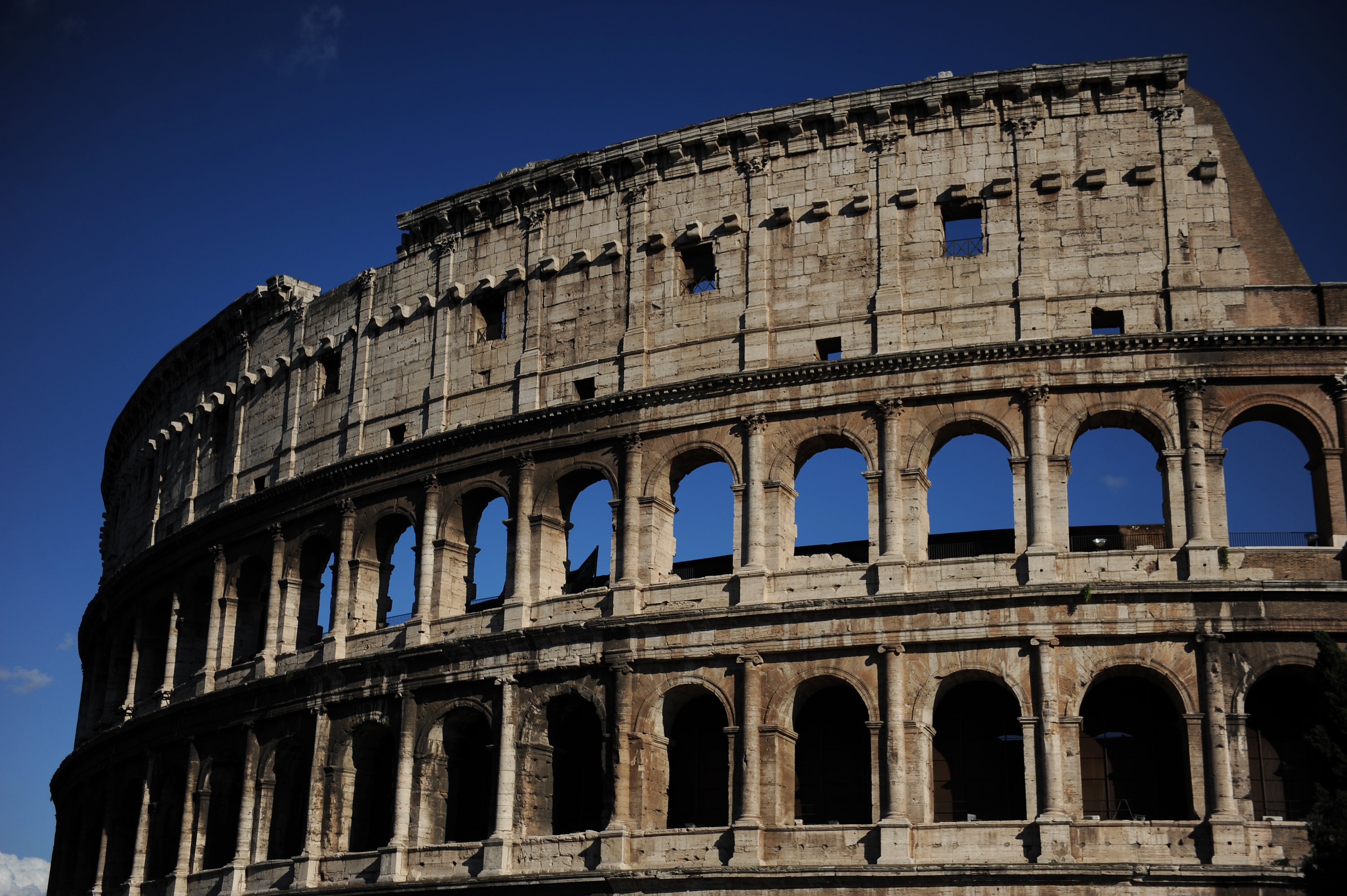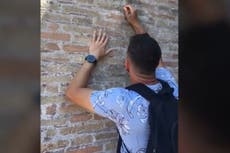Take it from an Italian: Rome is used to vandals, we can handle this Colosseum graffiti scandal
It’s not hapless tourists chiselling their names into our ancient monuments that we need to watch out for – it’s the government’s criminal underspending on our crumbling national treasures, writes Alessandro Codognato


If there’s one thing that doesn’t surprise me about the fact that an English-speaking tourist was caught defacing the ancient walls of the Roman Colosseum with his and his fiancee’s initials, it’s Italy’s viral outrage. As an Italian, take it from me: viral outrage is what we do. My country’s media landscape froths with a constant swell of stories that arouse rage and indignation rather than considered analysis and reflection on the difficult state of the Belpaese’s culture heritage. It’s what gets us out of bed in the morning before our first cappuccino.
For the Colosseum, as well as countless other monuments in the Eternal City and around Italy, this latest vandalism, while despicable, is nothing new (the silly tourist chiselled the words “Ivan + Hayley 23” into the brickwork of the Colosseum in full view of shocked onlookers). Humans have a long-standing obsession with leaving their mark, and the Romans were known for their enthusiasm for graffiti more than two millennia ago. In fact, for the archaeologists who brought the buried city of Pompeii back into the light, the numerous graffiti they found on the walls of the main houses or near the inns were celebrated as a treasure trove: they told them everything about ancient Romans’ daily life. Politics, war, family disputes, love and pleasure: the topics of ancient graffiti are among the most disparate.
Rome has a long history of vandalism, too. During the Sacking of Rome in 1527, for example, the Germanic landsknecht , mercenaries hired by the treacherous Holy Roman Emperor Charles V in the papal wars, scarred several of Raphael’s frescoes in the Villa Farnesina. Other signs of the mercenaries’ vandalism on artistic masterpieces are to be found even in the Vatican Museums. The word vandalism itself is derived from the Germanic Vandals who sacked Rome in 455AD. Why is it always the Germans?

Almost five centuries after, Dutch football hooligans set the capital on fire during a Europa League match, damaging the only recently restored “Barcaccia”, a fountain in Piazza di Spagna designed by the Baroque master Gianlorenzo Bernini. Yet such shocking acts pinch the limelight from the much graver threat of creeping destruction that threatens the country’s myriad of artistic and natural treasures every day: hydrogeological instability, the illicit trade in works of art and the general state of neglect in which many of our dearest cultural assets are found. ISPRA (the Italian National Institute for Environmental Protection and Research) reports that 80,000 are at risk of landslides or floods. More than 3,000 works of art threatened by hydrogeological instability are located in Rome.

As reported by the newspaper Domani, what makes the situation even worse is Italy’s measly spending in the cultural sector. According to ISTAT (the Italian National Institute of Statistics), we spend just 5.1 billion euros on the protection and upkeep of our country’s artistic heritage, compared to the 14.8 and 13.5 billion euros France and Germany spend, which relegates Italy to 23rd among the 28 member states. To add insult to injury, the current government earlier this year commissioned an ad campaign to promote Italy’s artistic and natural beauties. The campaign, costing €9 million (£7.7m), featured a kitsch and improbable Botticelli’s Venus photoshopped as an influencer eating pizza, riding a bike and even posing and taking a selfie in an incredibly empty St Mark’s Square.
How many churches and small museums could have been restored and reopened with the taxpayers’ money frittered away on this campaign? Luciano Floridi, philosopher and professor of communication at Oxford University, opted to write an open letter accusing the government’s campaign of its lack of content, ideas, values, information and commitment, which has once again humiliated Italy, reducing the country sophisticated culture to stereotypes like pizza and mandolino.
One might then be forgiven for suspecting that, after its disastrous tourism campaign, the government might do everything it can to shift the media’s attention from its systemic and scandalous mismanagement of the country’s invaluable cultural treasures to a shameful but isolated act of vandalism. It takes more than one hapless tourist armed with a set of keys to bring down an empire, even a ruined one. But a state that can’t look after its history disgraces its future, and shames its present. That is the real vandalism.
Join our commenting forum
Join thought-provoking conversations, follow other Independent readers and see their replies
Comments


Bookmark popover
Removed from bookmarks